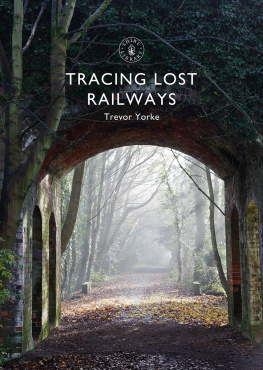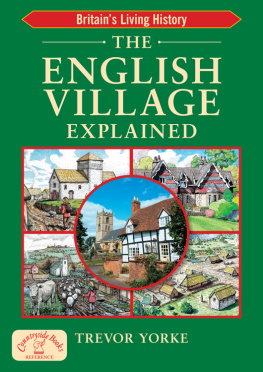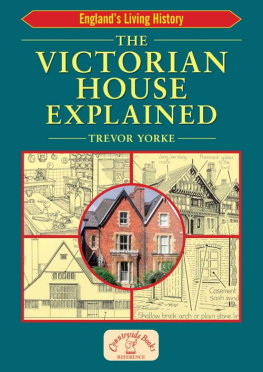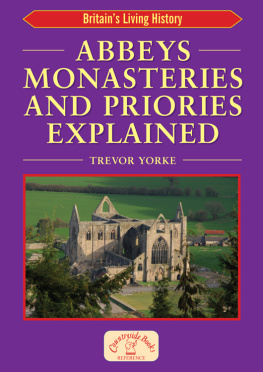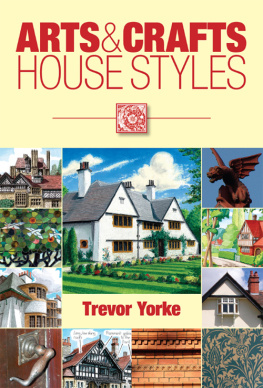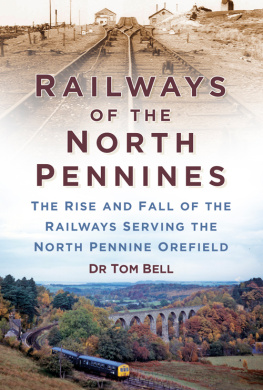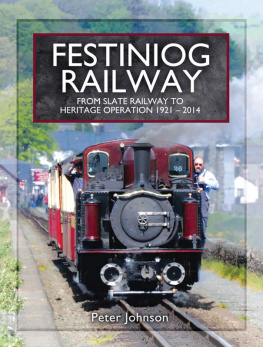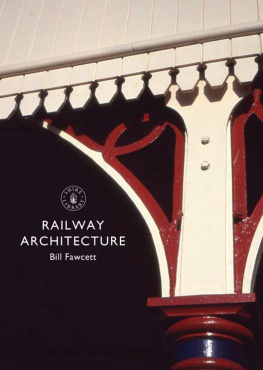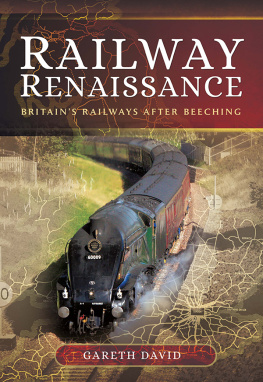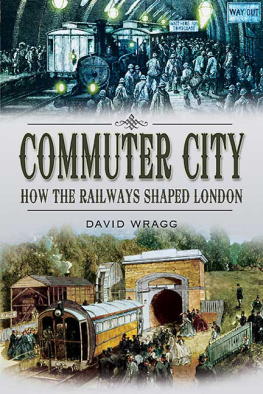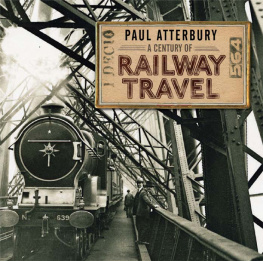CONTENTS
- Cover
- Title Page
- Table of Contents
A BRIEF HISTORY
R AILWAYS WERE THE wonder of the Victorian age. They transformed long distance travel, aided the growth of industry, encouraged the development of urban areas, and sparked commuting and tourism for the masses. In order for the railways to work efficiently engineers had to design new types of bridges and viaducts, build stations to allow passengers to access trains, and develop signalling and telegraph systems to make sure they arrived safely. Their work was such a success that the rail network grew from a few hundred miles during the 1830s to a peak of around 23,000 miles shortly before the First World War, with the public served by over 10,000 stations. Despite the loss of much of this Victorian network during the second half of the twentieth century, the opening up of many disused lines as footpaths, cycle trails or nature reserves has allowed the public to explore and discover relics of these once mighty railways. Imposing structures, ruined buildings and mysterious posts or platforms can still be found amongst the trees and undergrowth, as this book sets out to descri be and explain.
Before tracing lost railways on the ground it is worth looking at documentation, which you can discover from the comfort of your home. Old maps are a rich source of information. Railway companies and private publishers issued many forms of contemporary maps and plans, some of which can be found online, showing the routes of old lines, the location of stations and sometimes even the layout of track and buildings. Ordnance Survey 1 inch to the mile maps and Bartholomew inch to the mile maps published from the 1920s to the 1970s are an even better way of locating lost railways and stations, as they show their relationships to roads, towns and villages. These can still be found in secondhand bookshops on the high street or online, as well as on web-based auction sites. There are also websites holding useful information on the history of a particular railway or site (www.disused-stations.org.uk is a good example).
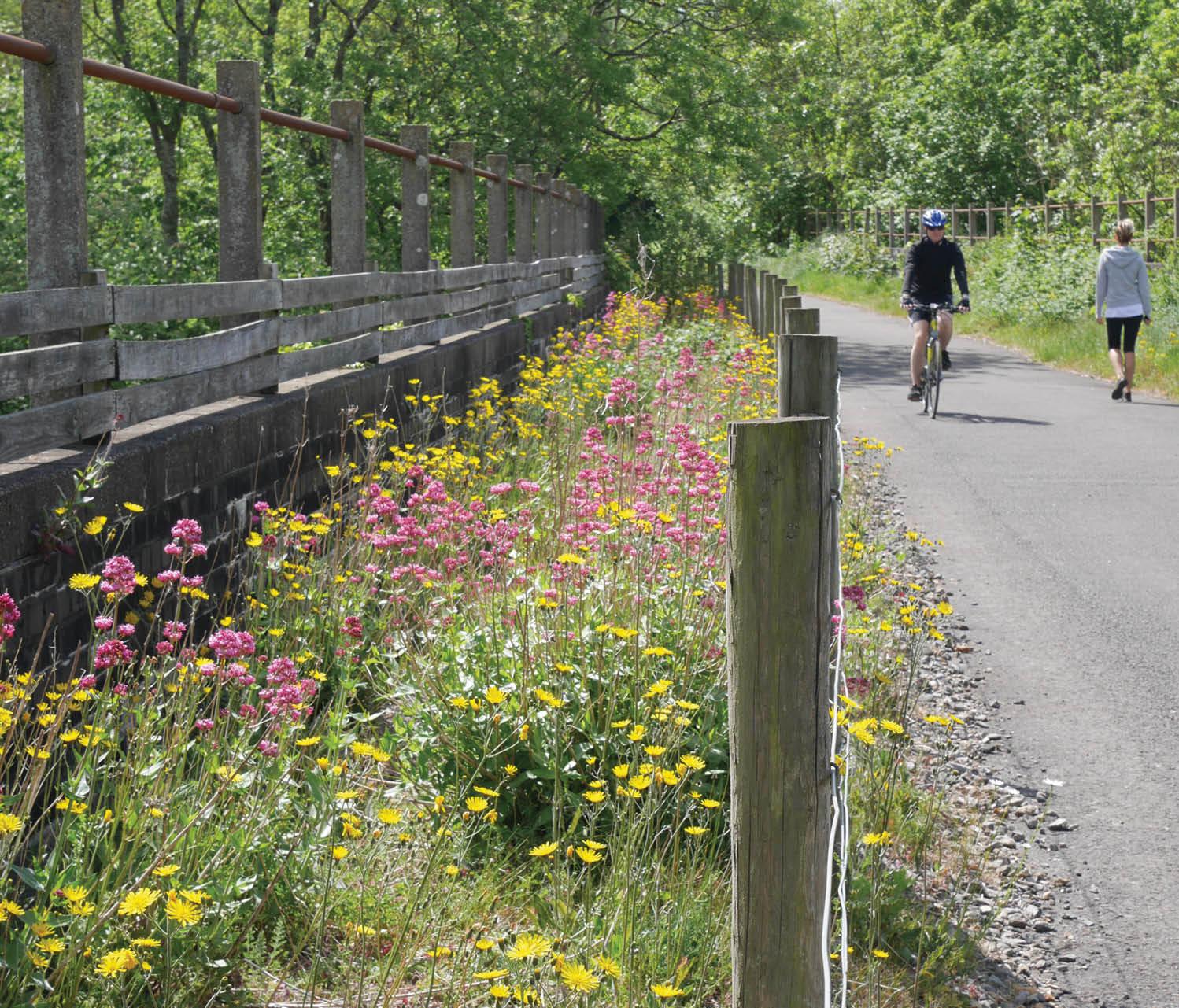
Lost railways have been reclaimed by nature and form vital green corridors for wildlife, with trees and flowers enhancing the experience for todays travellers on foot and bike, as here at Midford, near Bath, along the old Somerset and Dorset Railway.
It is possible to trace the line of old railways by using online satellite imagery. Look for thin lines of greenery gracefully sweeping in wide curves and straight lines across the landscape. These will usually be in the form of a line of trees and scrub unless the railway is now used as a farm track or public path in which case expect to find a double line of hedgerows or fencing coursing across the landscape. Be suspicious if there are very sharp turns, right angles or a T-shaped junction along its route, as these are more likely to be an old canal, drainage channel or road. Where the area of greenery widens or the boundaries spread out it can signify this is an embankment or a cutting. If the line appears to suddenly vanish it could be the site of an old tunnel, especially if there are wide areas of greenery leading up to it. Alternatively it could be a stretch that has been ploughed away although the route of the old railway may still show up as a light or dark line across the soil or a crop mark in a field. Old railway bridges and viaducts will also show up on satellite images as a straight or slightly curving pair of lines with abutments angled away at each end. Look for shadows to the side of these on the photograph: these can sometimes reveal the form of the structure.
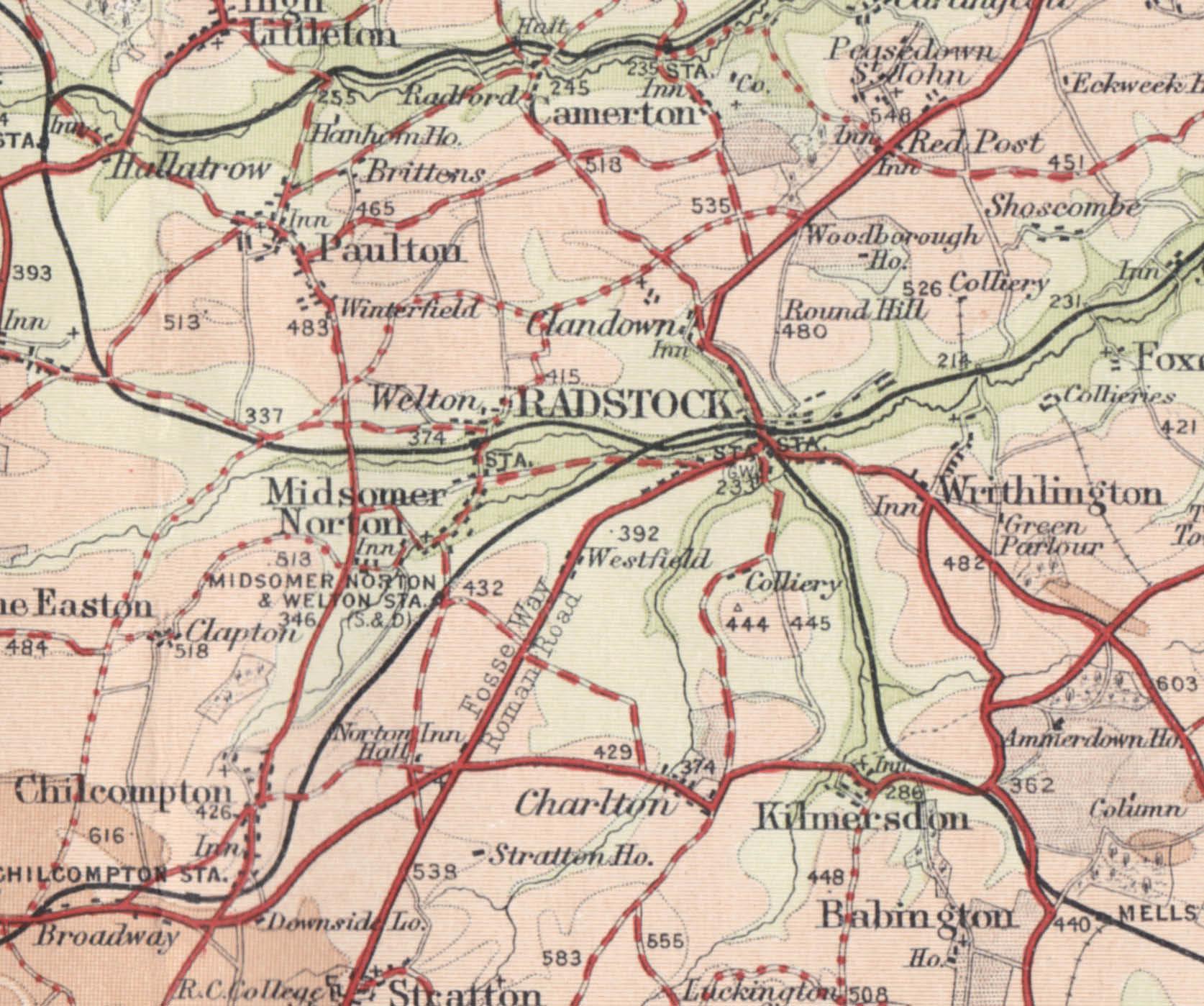
Old Ordnance Survey and Bartholomews maps from the first half of the twentieth century are an excellent way to trace lost railways. This excerpt from the latter shows Radstock (Somerset) in the 1920s with numerous railways marked by black lines. Today these have all gone.
In urban areas the route of a railway has often been built upon, making tracing its course trickier. However, the railway would have been sold off to developers in pockets of land that respected the original boundaries; the old route can be followed in a line of new buildings or roads with the occasional undeveloped stretch of greenery or old bridge abutments. Old stations were set upon a wider linear stretch of land usually with tapered ends and the boundaries of these can often be seen close to the centre of an urban area. Look out for new industrial units, housing or retail parks in this shape which seem to follow the line of the railway, as these have frequently been built on old stations. Also keep a keen eye out for buildings that are aligned on a different angle to those around them, especially if they seem parallel to the route you are following, as these could be old railway buildings. Victorian terraces and streets often have abrupt straight or angled ends to a row, which can show where a ra ilway once ran.
When looking at maps or satellite images the way in which the old railway cuts across the landscape can tell you something about the type of line it was. The first tramways or plateways had distinctive sharp bends between lengths of curving or straight track as the horses and short wagons they used could negotiate a tight radius. The builders of the early steam railways during the 1830s and 1840s endeavoured to build their lines with gentle sweeping curves and impressive earthworks and viaducts to keep it as straight and level as possible. However, they faced strong objections from wealthy landowners, especially those with interests in the canals and turnpike trusts, so their course often had to take awkward diversions around or even underneath a country estate.
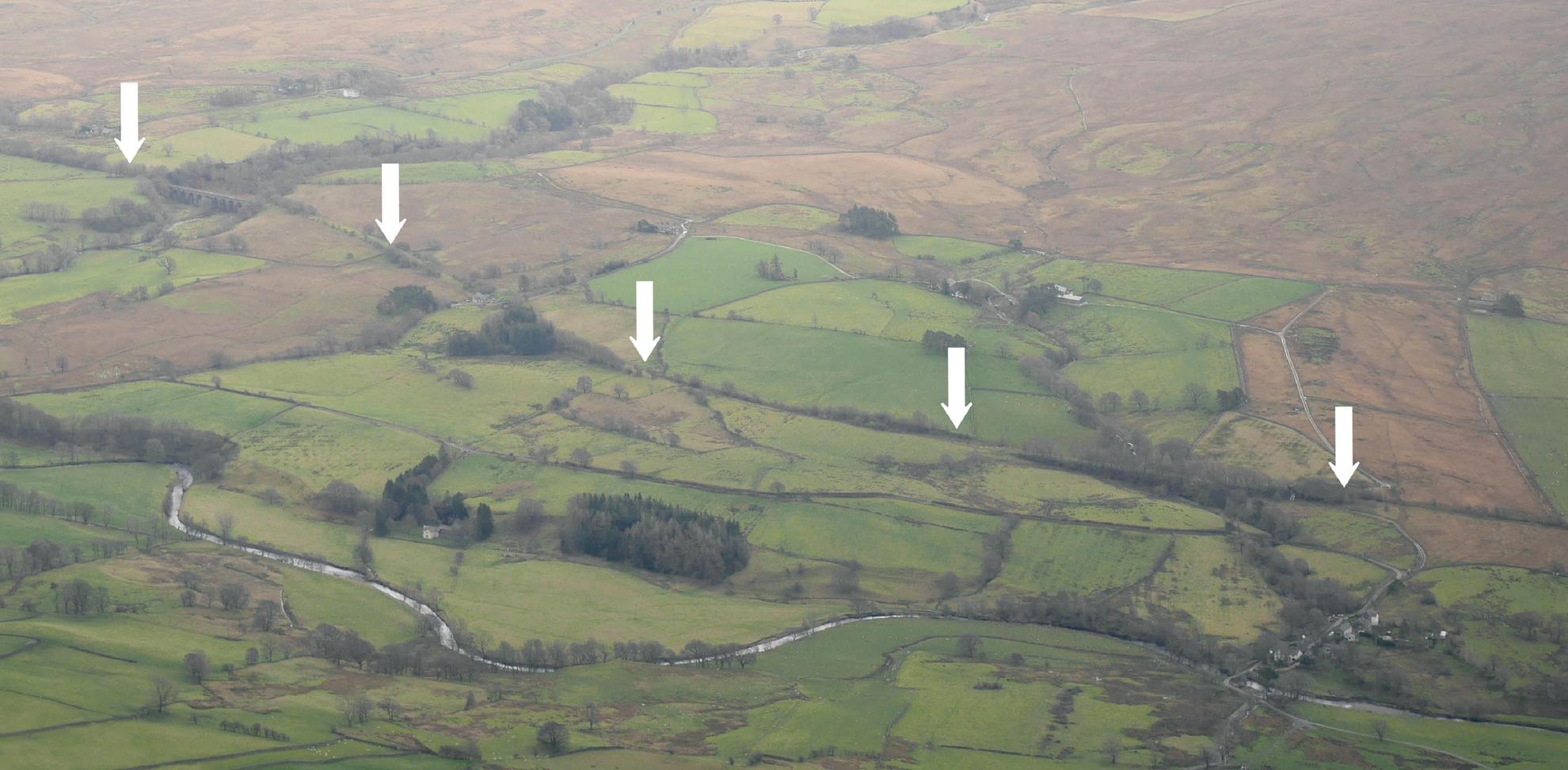
A view showing the route of the old railway between Penrith and Keswick (Cumbria), marked by the white arrows. Notice the gentle sweeping line compared with other features like the river, roads and field boundaries.
From the 1860s many new railways were branches built out to serve towns or villages that had so far missed out on the transport revolution or to access factories, docks, mines and quarries. These branch lines were usually built on a budget and served as many sites along the route as possible. As a result they tend to meander through the countryside with tighter curves tha n on mainlines.
During the nineteenth century the government made little effort to interfere with railway companies, so the network expanded haphazardly with many lines built to block a competitor or to avoid having to use their routes to access a town or city. Do not be surprised to see numerous old lines and sites of stations on maps or satellite images in lar ge urban areas.
One exception to the governments non-interventionist approach was the Light Railways Act of 1896, designed to encourage the building of lines into struggling rural communities. By removing the need for an Act of Parliament and enforcing lower speed and weight restrictions these lines could be built cheaply, taking a winding route up valleys or rattling around fields often with tight curves and steep gradients. Even at this late date competition could still be ferocious and a number of mainlines with relatively straight routes, wide sweeping curves and major engineering projects were undertaken: some as shortcuts to improve service; others as a diversionary route to avoid a railway company having to use a competitors line to access an important city.

